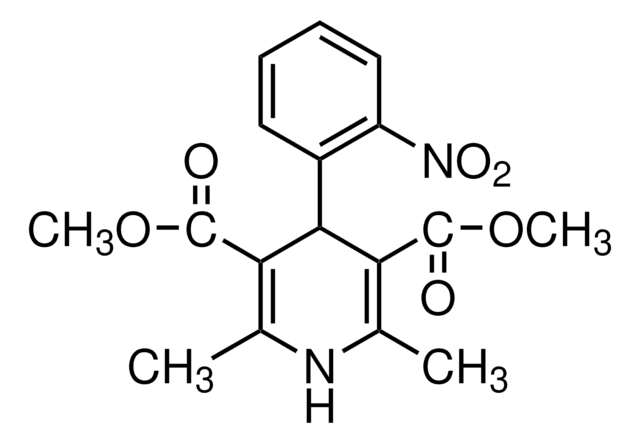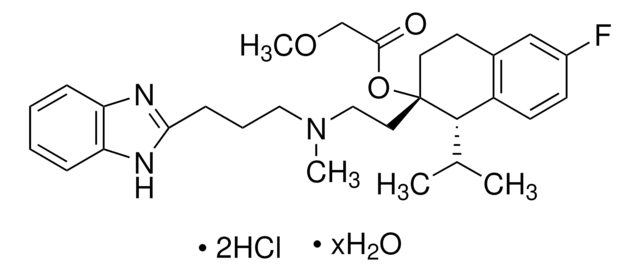T7383
Tetracaine
≥98% (TLC)
Sinônimo(s):
4-(Butylamino)benzoic acid 2-(dimethylamino)ethyl ester
About This Item
Produtos recomendados
fonte biológica
synthetic (organic)
Nível de qualidade
Ensaio
≥98% (TLC)
Formulário
powder
técnica(s)
toxicology assay: suitable
temperatura de armazenamento
2-8°C
cadeia de caracteres SMILES
CCCCNc1ccc(cc1)C(=O)OCCN(C)C
InChI
1S/C15H24N2O2/c1-4-5-10-16-14-8-6-13(7-9-14)15(18)19-12-11-17(2)3/h6-9,16H,4-5,10-12H2,1-3H3
chave InChI
GKCBAIGFKIBETG-UHFFFAOYSA-N
Informações sobre genes
human ... SCN10A(6336) , SCN11A(11280) , SCN1A(6323) , SCN2A(6326) , SCN3A(6328) , SCN4A(6329) , SCN5A(6331) , SCN7A(6332) , SCN8A(6334) , SCN9A(6335)
Procurando produtos similares? Visita Guia de comparação de produtos
Descrição geral
Aplicação
Ações bioquímicas/fisiológicas
Nota de preparo
Palavra indicadora
Danger
Frases de perigo
Declarações de precaução
Classificações de perigo
Acute Tox. 3 Oral - Carc. 2 - Skin Sens. 1
Código de classe de armazenamento
6.1C - Combustible acute toxic Cat.3 / toxic compounds or compounds which causing chronic effects
Classe de risco de água (WGK)
WGK 3
Escolha uma das versões mais recentes:
Já possui este produto?
Encontre a documentação dos produtos que você adquiriu recentemente na biblioteca de documentos.
Nossa equipe de cientistas tem experiência em todas as áreas de pesquisa, incluindo Life Sciences, ciência de materiais, síntese química, cromatografia, química analítica e muitas outras.
Entre em contato com a assistência técnica








